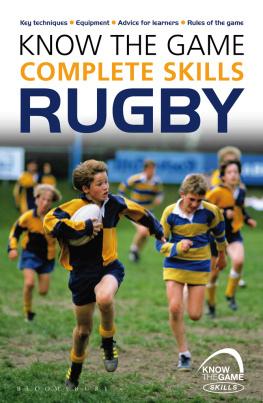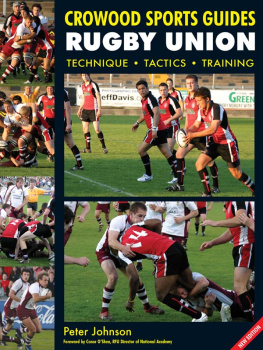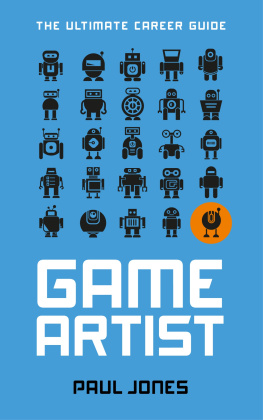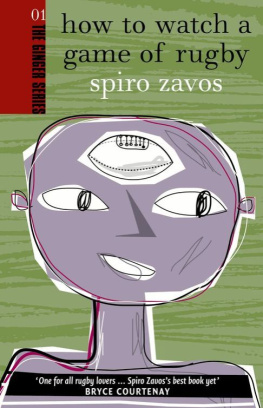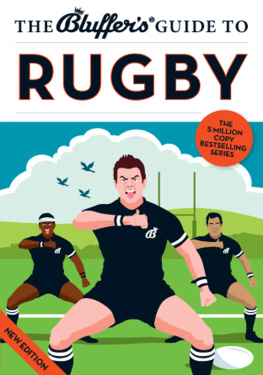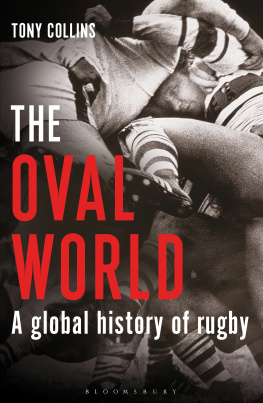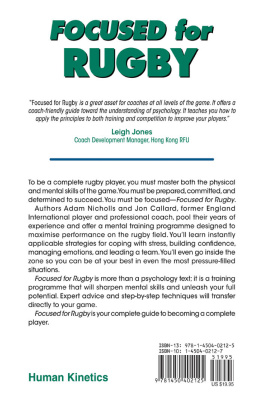
Contents
Understanding the game and rugby language
The pitch, the positions and choosing your role
Lateral (sideways) pass; Running and passing; Catching a lateral pass; Spin pass; Overhead pass; Scrum half pass
Catching a high ball; Catching a pass in threes
Drop kick; Place kick; Chip kick; Punt kick; Grubber kick
The main ways to avoid being tackled the side-step and the swerve
How to respond to a tackle from an opposing player, and how to make the three main tackles the side tackle, the front tackle and the rear tackle
What to do when youve been tackled; Going to ground and keeping the ball in play with the ruck or the maul
Good teamwork and how you can achieve it
The five principles of play and creating a game plan
When using this book, concentrate on one coaching point at a time. Practise each point until you have mastered it before moving on to the next one.
You do not need to work through the book from cover to cover. Choose a skill you want to work on and practise it until you are happy with the outcome.
PART ONE : PASSING, CATCHING AND KICKING
Do you want to play professional rugby, earning fame and fortune? Perhaps you can imagine playing rugby for your country in front of thousands of people, or maybe you just want to play the game well and enjoy it .
Whatever your ambitions, you need to start by learning some very important basic skills (called key skills) and, if you become really good at them, it will allow you to play the best rugby you can .
This book is designed to help you progress by providing a series of key skills. These include passing, catching and kicking practices that you can do in your back garden or a nearby open space, either on your own, with a friend, or with your brother, sister, mum or dad!
All you need is a rugby ball (size 3 or 4 are the best sizes until you are a teenager) and something to mark out a small area it could be your hat, scarf or jumper if you have nothing else.
You need to practise each skill regularly, even after you become good at it! This book will show you ways to challenge yourself by making practices harder.
Please remember that, because the rugby ball is shaped like an egg, when it bounces it can go in any direction. This is part of the fun, but you should be careful to practise where the ball wont cause any damage or go into a road if it bounces in an unexpected direction.
WHAT MAKES A GOOD RUGBY PLAYER?
Concentration
Confidence
Fitness
Quick reactions and foot movement
Good handling of the ball
Ability to read the game and adapt accordingly
Courage
SCORING IN RUGBY
To win a game you need to score more points than the opposing team, and you need to be able help your team to score those points. You can only score points in the following four ways:
Touching the ball down behind the opposition try line = 5 points (called a try).
Kicking the ball (which is placed on the ground) between the posts and over the cross bar after a try has been scored (called a conversion) = 2 points. The kick has to be taken in line with where the try was scored.
Kicking the ball through the posts but above the cross bar with the ball placed on the ground when your team has been awarded a penalty = 3 points.
Kicking the rugby ball between the posts on the half volley (called a drop goal) = 3 points.
The posts in rugby look like the letter H with two upright posts and a cross bar between them.

Rugby is a highly exciting game, full of energy and pace.
RUGBY TERMS
There are some words in rugby that mean nothing to most people, but rugby players and fans all over the world know exactly what they mean its like a special language which belongs just to rugby! Here is a list of words or terms that you can learn :
FORWARDS
These are the players (1 to 8) who try to get the ball at set pieces (see below).
SET PIECE
A scrum, line out or kick off.
SCRUM
The scrum is a means of restarting play after a stoppage that has been caused by a mistake, such as a forward pass or a knock on (see below). Having a scrum gets all the forwards in one place on the field, and this means there is space for the backs to run.
KNOCK ON
When a player drops or knocks the ball so it goes forward on to the ground.

During a ruck players will be fighting for possession of the ball.
FORWARD PASS
When a player passes the ball forwards to a teammate.
LINE OUT
The line out is a way of restarting the game after the ball has gone into touch (off the field of play at the side). Like the scrum, the line out gets all the forwards in one place near to the touch line, so the backs have space to run in.
BACKS
These are the players who receive the ball from the forwards and they try to run and score.
THREE QUARTERS
Another name for the Backs.
RUCK
A ruck is when a group of players are trying to push each other off a ball on the ground in order to gain possession.
MAUL
This is the same as a ruck only this time one of the group will be holding the ball.

In a maul, one of the players will have hold of the ball.
TOUCH LINE
The line which runs up the side of the pitch.
TRY LINE
The line which runs across the end of the pitch.
BE THE BEST
Learning these terms by heart will help to improve your skills, as you will be able to concentrate fully on your coachs instructions instead of struggling to work out what he is talking about!
POSITIONS IN RUGBY
There are 15 players in the usual rugby team, although there are fewer players in some versions of rugby. Seven-a-side is an exciting game, with its own World Cup, and there is also a 10-a-side game. Young players have fewer members on each team so that there is more chance to run with the ball. Here we will look at the positions in 15-a-side rugby .
A rugby team is split into forwards and backs. The Forwards contest for the ball with the opposition teams Forwards and then give it to their Backs, who try to get past the opposition players to score. Backs tend to be a little lighter than Forwards so that, if they win the ball, they can run fast .
FORWARDS
No. | Name |
| Loosehead Prop |
| Hooker |
| Tighthead Prop |
| Lock or Second Row |
| Lock or Second Row |
| Blindside Flanker |
| Openside Flanker |
| |

